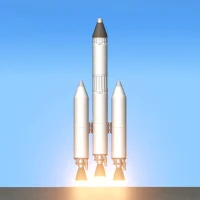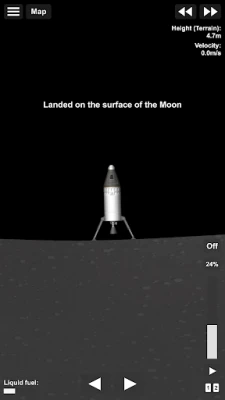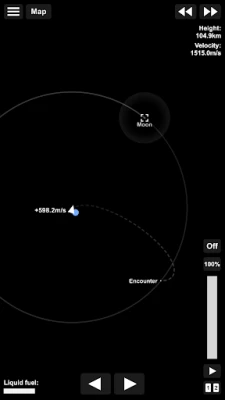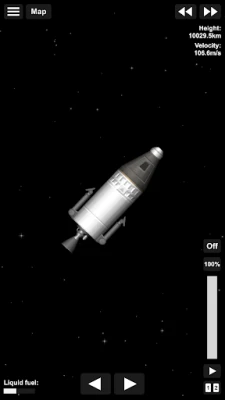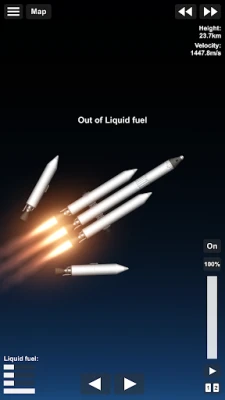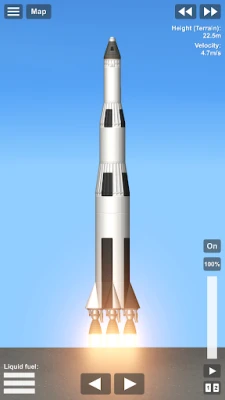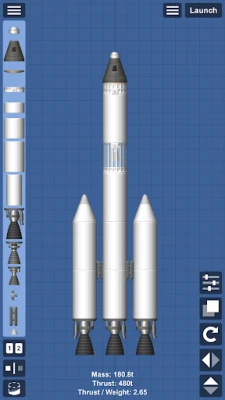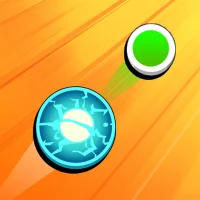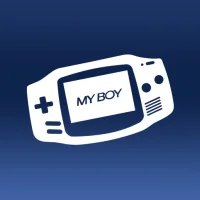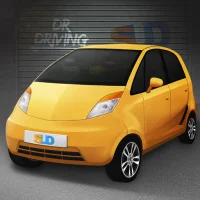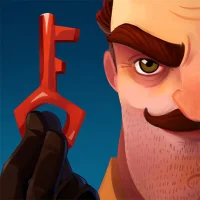
Latest Version
Version
1.5.10.5
1.5.10.5
Update
June 30, 2025
June 30, 2025
Developer
Team Curiosity ✦
Team Curiosity ✦
Categories
Games
Games
Platforms
Android
Android
Downloads
0
0
License
Free
Free
Package Name
com.StefMorojna.SpaceflightSimulator
com.StefMorojna.SpaceflightSimulator
Report
Report a Problem
Report a Problem
More About Spaceflight Simulator APK Download for Android
SPACEFLIGHT SIMULATOR:
Messing Around With Spaceflight Simulator — From a Barber’s Chair
So, here I am, sitting in the barber’s chair, thinking about this game I’ve been messing with called Spaceflight Simulator. Yeah, a game about rockets and space stuff. Not what you expect from a guy who spends his day snipping hair and trimming beards, right? But sometimes you gotta step out of your comfort zone, try something different. And honestly? This one got me hooked in a way I didn’t see coming.
What’s This Spaceflight Simulator Anyway?
Okay, so it’s basically a game where you build rockets and try to launch them into space. Sounds simple enough, but there’s a bit more to it. You piece together engines, fuel tanks, capsules — kinda like building with Legos but for nerds who want to touch the stars. Or crash spectacularly. Both happen, trust me.
You control everything from the design to the actual launch. And since it tries to keep things realistic-ish, you gotta deal with physics — weight, gravity, thrust — all the stuff real astronauts sweat over. It’s a little bit science, a little bit trial and error, and a lot of patience.
Why I Gave It a Shot
Honestly? I wasn’t sure if I’d like it. I’m more hands-on, face-to-face with people, not pressing buttons or navigating menus. But I heard some of my younger clients talking about it, saying it’s fun and educational, so I figured, why not?
Turns out, it’s kinda cool. A break from the usual grind, and it gets you thinking in a different way. Plus, it’s got this satisfying “build and watch it fly (or crash)” thing that’s hard to explain.
Building Rockets — Not As Easy As It Looks
You’d think building a rocket in a game is just dragging parts together, right? Nah. It’s like mixing a perfect hair product blend — get the ratios wrong, and you’re in trouble.
I spent a good chunk of time figuring out which engines paired best with which tanks, how much fuel was enough, and making sure the rocket doesn’t tip over the second it lifts off. Balancing all that is a bit like balancing a client’s hairline with the right tools.
And if you mess up, the whole thing can end in a fiery explosion on the launchpad. Frustrating? Sure. But oddly satisfying when you finally get it right.
Controls and How It Feels
The controls are pretty straightforward. Drag parts around, rotate them, stack ‘em up. Not too complicated, but enough detail to keep it interesting. It’s not the kind of game where you just mash buttons.
The UI is clean, no clutter. And thankfully, no annoying pop-ups or ads every five seconds — something I appreciate, especially after long days when I just want to unwind.
Launching — The Real Deal
Here’s where things get tricky. You launch your creation, and suddenly all those design decisions matter. You gotta manage your throttle, angle your rocket right, and time your stage separations. If you don’t, your rocket might spin out of control or just fall back down hard.
It’s kind of like trying to get a perfect fade. One wrong move, and it’s off. But nail it, and you’ve got something smooth and impressive.
I found myself getting sucked into this trying to land on other planets or orbit the moon. Time flies when you’re playing, and suddenly it’s late at night with me still glued to the screen.
Some Cool Extras That Make It Worthwhile
Multiple planets and moons: Each one has different gravity and stuff, so you gotta adjust your rocket designs depending on where you want to go. Keeps it fresh.
Offline play: You don’t need an internet connection, which is perfect when you’re on the go or in spots with flaky WiFi.
Modding possibilities: For the more tech-savvy, you can add mods to bring in new parts or challenges. Haven’t tried it myself, but nice to know it’s an option.
Who’s This Game For?
Honestly, anyone with a curious mind. Kids might get a kick out of it, but so can adults who want a little mental workout or just wanna kill some time with something different.
It’s not super complicated, so you don’t need a science degree to get into it. If you like tinkering, figuring stuff out, or just blowing things up (virtually, of course), it’s worth a shot.
A Few Annoying Bits
Not gonna lie, it’s not perfect. Sometimes the controls can feel a bit fiddly, especially on smaller phones. And the graphics are simple — nothing like those big-budget space games.
Plus, expect crashes — both your rockets and sometimes the app itself. Part of the charm? Maybe. Or a pain, depending on your patience.
How It Stacks Against Other Space Games
If you’ve tried Kerbal Space Program, you know that can get pretty intense and overwhelming. This one feels more casual, easier to jump into, and way better for playing on your phone.
It’s less about hardcore simulations and more about experimenting without a massive learning curve.
FAQs — The Usual Questions I Heard Around the Barbershop
Can I play this on any phone?
Most smartphones handle it fine. It’s not too demanding.
Is this game only for kids?
Nah, grown-ups can have fun too. I’m proof of that.
Do rockets always explode?
A lot at first. You learn quick after a few fiery crashes.
Can I play with friends?
Not really. It’s mostly a solo experience.
Is there a cost?
There’s a free version and some paid upgrades if you want extra parts or features.
So, here I am, sitting in the barber’s chair, thinking about this game I’ve been messing with called Spaceflight Simulator. Yeah, a game about rockets and space stuff. Not what you expect from a guy who spends his day snipping hair and trimming beards, right? But sometimes you gotta step out of your comfort zone, try something different. And honestly? This one got me hooked in a way I didn’t see coming.
What’s This Spaceflight Simulator Anyway?
Okay, so it’s basically a game where you build rockets and try to launch them into space. Sounds simple enough, but there’s a bit more to it. You piece together engines, fuel tanks, capsules — kinda like building with Legos but for nerds who want to touch the stars. Or crash spectacularly. Both happen, trust me.
You control everything from the design to the actual launch. And since it tries to keep things realistic-ish, you gotta deal with physics — weight, gravity, thrust — all the stuff real astronauts sweat over. It’s a little bit science, a little bit trial and error, and a lot of patience.
Why I Gave It a Shot
Honestly? I wasn’t sure if I’d like it. I’m more hands-on, face-to-face with people, not pressing buttons or navigating menus. But I heard some of my younger clients talking about it, saying it’s fun and educational, so I figured, why not?
Turns out, it’s kinda cool. A break from the usual grind, and it gets you thinking in a different way. Plus, it’s got this satisfying “build and watch it fly (or crash)” thing that’s hard to explain.
Building Rockets — Not As Easy As It Looks
You’d think building a rocket in a game is just dragging parts together, right? Nah. It’s like mixing a perfect hair product blend — get the ratios wrong, and you’re in trouble.
I spent a good chunk of time figuring out which engines paired best with which tanks, how much fuel was enough, and making sure the rocket doesn’t tip over the second it lifts off. Balancing all that is a bit like balancing a client’s hairline with the right tools.
And if you mess up, the whole thing can end in a fiery explosion on the launchpad. Frustrating? Sure. But oddly satisfying when you finally get it right.
Controls and How It Feels
The controls are pretty straightforward. Drag parts around, rotate them, stack ‘em up. Not too complicated, but enough detail to keep it interesting. It’s not the kind of game where you just mash buttons.
The UI is clean, no clutter. And thankfully, no annoying pop-ups or ads every five seconds — something I appreciate, especially after long days when I just want to unwind.
Launching — The Real Deal
Here’s where things get tricky. You launch your creation, and suddenly all those design decisions matter. You gotta manage your throttle, angle your rocket right, and time your stage separations. If you don’t, your rocket might spin out of control or just fall back down hard.
It’s kind of like trying to get a perfect fade. One wrong move, and it’s off. But nail it, and you’ve got something smooth and impressive.
I found myself getting sucked into this trying to land on other planets or orbit the moon. Time flies when you’re playing, and suddenly it’s late at night with me still glued to the screen.
Some Cool Extras That Make It Worthwhile
Multiple planets and moons: Each one has different gravity and stuff, so you gotta adjust your rocket designs depending on where you want to go. Keeps it fresh.
Offline play: You don’t need an internet connection, which is perfect when you’re on the go or in spots with flaky WiFi.
Modding possibilities: For the more tech-savvy, you can add mods to bring in new parts or challenges. Haven’t tried it myself, but nice to know it’s an option.
Who’s This Game For?
Honestly, anyone with a curious mind. Kids might get a kick out of it, but so can adults who want a little mental workout or just wanna kill some time with something different.
It’s not super complicated, so you don’t need a science degree to get into it. If you like tinkering, figuring stuff out, or just blowing things up (virtually, of course), it’s worth a shot.
A Few Annoying Bits
Not gonna lie, it’s not perfect. Sometimes the controls can feel a bit fiddly, especially on smaller phones. And the graphics are simple — nothing like those big-budget space games.
Plus, expect crashes — both your rockets and sometimes the app itself. Part of the charm? Maybe. Or a pain, depending on your patience.
How It Stacks Against Other Space Games
If you’ve tried Kerbal Space Program, you know that can get pretty intense and overwhelming. This one feels more casual, easier to jump into, and way better for playing on your phone.
It’s less about hardcore simulations and more about experimenting without a massive learning curve.
FAQs — The Usual Questions I Heard Around the Barbershop
Can I play this on any phone?
Most smartphones handle it fine. It’s not too demanding.
Is this game only for kids?
Nah, grown-ups can have fun too. I’m proof of that.
Do rockets always explode?
A lot at first. You learn quick after a few fiery crashes.
Can I play with friends?
Not really. It’s mostly a solo experience.
Is there a cost?
There’s a free version and some paid upgrades if you want extra parts or features.
Rate the App
Add Comment & Review
User Reviews
Based on 0 reviews
No reviews added yet.
Comments will not be approved to be posted if they are SPAM, abusive, off-topic, use profanity, contain a personal attack, or promote hate of any kind.
More »










Popular Apps

MessengerMeta Platforms, Inc.

Road to Valor: EmpiresDreamotion Inc.

WhatsApp MessengerWhatsApp LLC

Call of Duty Mobile Season 8Activision Publishing, Inc.

Video downloader - Story SaverETM Video Downloader

WhatsApp MessengerWhatsApp LLC
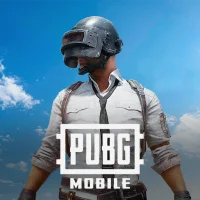
PUBG MOBILELevel Infinite

Conflict of Nations: WW3 GameDorado Games / DOG Productions Ltd

AoD Vikings: Valhalla GameRoboBot Studio

Viking Clan: RagnarokKano Games
More »










Editor's Choice

Moj BH Telecom APK Download for androidBH Telecom d.d. Sarajevo

WhatsApp MessengerWhatsApp LLC

Grim Soul: Dark Survival RPGBrickworks Games Ltd

Craft of Survival - Gladiators101XP LIMITED

Last Shelter: SurvivalLong Tech Network Limited

Dawn of Zombies: Survival GameRoyal Ark

Merge Survival : WastelandStickyHands Inc.

AoD Vikings: Valhalla GameRoboBot Studio

Viking Clan: RagnarokKano Games

Vikings: War of ClansPlarium LLC
